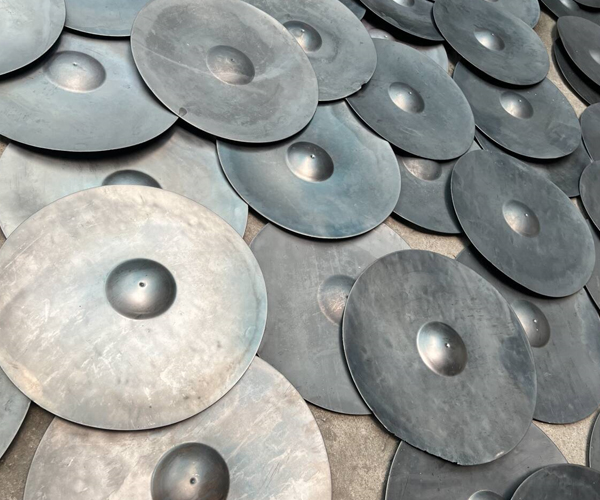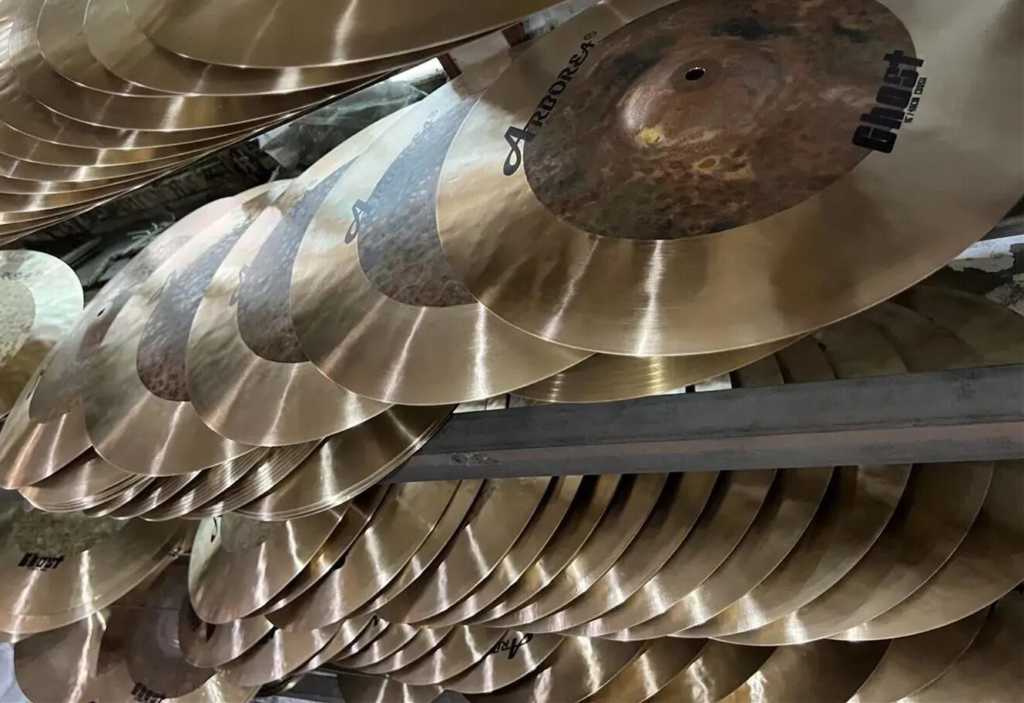About Cymbal
Mixing The Elements
We use the highest quality B20 Bronze alloy. Basically, B20 Bronze alloy is a mixture of 80% Copper and 20% Tin, and B20 is known as the most suitable material to make musical instruments of all alloys. The ancient secret process that has existed for centuries gives the alloy strength, durability, and flexibility. Without the secret process. Without the secret process, the metal will be hard and very brittle and can be broken like glass easily. The secret process plays an important role in producing music-sounding cymbals.


Casting
In the first step of producing cast cymbals, the proper mixture of metals is melted and combined in the melting pot which soon becomes castings. Melting allows the copper and tin to mix at a certain heat and all impurities can be evaporated in the alloy. After pouring, the alloy becomes what we call castings. Now these castings are ready for the next step which we call “Heating.
Heating & Rolling
The castings will be heated around 700-800 C in our oven. Each casting is heated evenly in the oven by our skillful craftsmen. The heated castings are now soft and ready to go under the rolling machine to become metal discs which we call “blanks”. These blanks are heated up and rolled again several times until the blank reaches its desired thickness. This process also allows the metal molecules to bond together perfectly and makes the metal more flexible. Then blanks are set aside to cool before the next process.


Cutting
The chilled blank will be heated again and then put in the model for shaping. After cutting the blanks into their proper shape, we get the primary cymbals.
Hammering
This process is the first and the most important phase of shaping the sound of a cymbal. Hammering is done by our skilled craftsmen, using centuries-old hammering techniques. These techniques determine the dark, complex, and musical sound qualities of ARBOREA Cymbals. In its nature, the hammering process requires mastery, skill, and lots of hard work. In the process of handmade cymbals, the profile of a cymbal is shapen only by hammer hits. The cymbal sound was tuned by our experienced craftsmen.


Lathing
Lathing is the other very important phase of cymbal making which directly influences the sound of a cymbal. It should be done by highly skilled craftsmen. Lathing carves circular grooves on a cymbal and lets the vibrations travel on the surface of a cymbal easily.
Testing And printing
After lathing, some cymbals will be polished depending on the surface requirement, the finished cymbals will be sent for final testing. Our product specialist takes care of each cymbal and does the final visual and audio tests. Then the quality standard-reached cymbals will be printed with our logos and after checking the logos. After that, aiming to be played by all levels of musicians worldwide, the cymbals are ready to take their places on the shelves in our showroom, then will be sent to the distributors.

